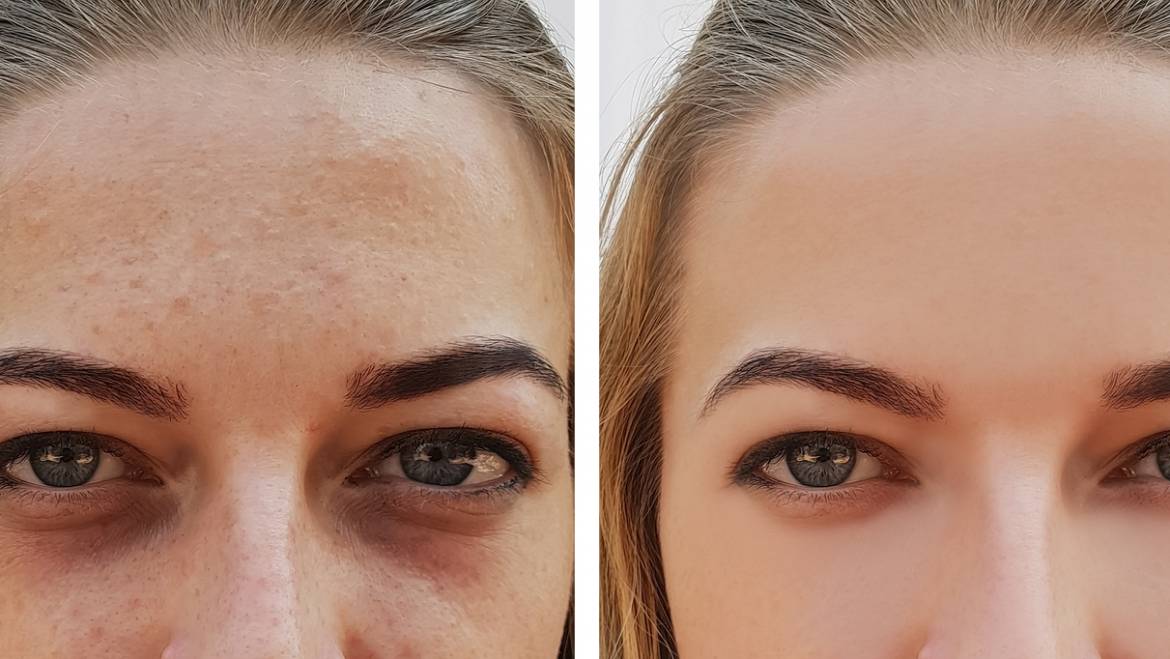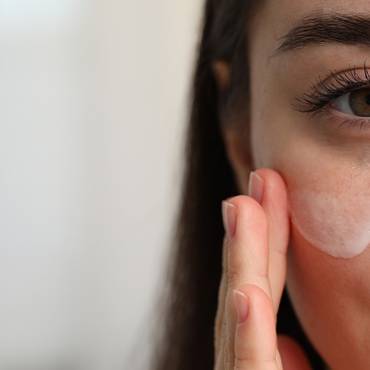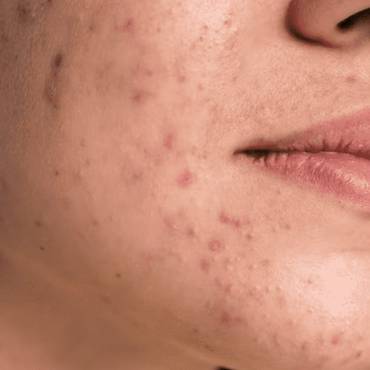Many people observe some color changes on their faces. These changes range from mild freckling to severe dark spots on the face. Some changes may appear as a darkening of normal moles, an increase in the number and colors of spots, or patches with varying degrees of discoloration. Fortunately, these are correctable conditions that can be treated with topical treatments. In most cases of hyperpigmentation, the improvement can be permanent with skin care products specifically made to diminish pigmentation.
How Skin Discoloration Occurs?
Many underlying conditions can contribute to these skin conditions. The most recognized cause is sun damage, along with other factors. Numerous medications, especially hormonal drugs, have been involved in skin discoloration disorders. These medicines can make your skin more sensitive to the sun or produce pigmentation all on their own. Some medicines may enhance melanocyte-stimulating hormone or MSH like contraceptive pills, or even pregnancy can be another cause. Lastly, hormonal replacement treatments can have a direct impact on skin discoloration. Such medications either stimulate the production of more melanin or suppress the process that decreases melanin production. This results in an increased discoloration regardless of the type or color of the skin. When this happens in patients that already have some natural increased color or freckles, the risk of skin discoloration further increases. Freckles are genetically linked, and many types are not visible until some process makes them appear darker. These causative factors can intensify dramatically with even mild UV rays. Whatever the mechanism of action, the result is an increase in melanin leading to dark spots on the face, darker moles, skin discoloration, irregular coloration, and blotchiness.
Treatment of Discoloration
There are several ways to treat skin discoloration ranging from sun avoidance measures to advanced strategies such as laser therapy. An appropriate treatment option for you will depend on various factors. These include:
- The degree of pigmentation to be corrected
- Coordination with your other medicinal treatment, including chemotherapy
- Your lifestyle
-
Tretinoin – A Dermatologically Tested Skin Care Product
Tretinoin generally produces excellent results and is safe and reversible. You will be able to see results quickly and can discontinue therapy at any time. You can increase or decrease the intensity or continue sun activities (in limits). A simple once-nightly application of Tretinoin works best for patients concerned with hyperpigmentation. The product can also soften wrinkles and improves skin texture. The therapeutic effects of topical Tretinoin have been recognized for over two decades. Tretinoin has been used for acne treatment and rejuvenation of the skin. Available in the form of cream or gels of different strengths, Tretinoin produces a mild superficial peel of the outer layer of the skin and affects not only the outer layer but also the deeper layer of the skin. The outer layer affects the depletion of melanin and thickness and strengthens the actual tissue. At the deeper layer, it increases collagen production and causes cells to divide faster.
Later, Tretinoin received clinical approval for use on photodamaged skin. The skin care ingredient stimulates repair, collagen thickening, and cell division and decreases the size of clogged pores. Its regular application improves acne, lightens spots, and smoothes wrinkles. Tretinoin can cause side effects like any other medicinal product, but very few people experience them. Minimal side effects include temporary peeling, dryness, redness, and sun sensitivity, requiring that Tretinoin be used in combination with sun protection measures. For the best result, use this dark spot removal treatment under a dermatologist’s supervision.
-
Triluma – An Effective Dark Spot Removal Treatment
Triluma, another dermatologist treatment for dark spots on the face, is a triple combination skin care product. It combines hydroquinone (a melanin synthesis inhibitor), fluocinolone (a corticosteroid), and Tretinoin (a retinoid) that is clinically approved for the short-term treatment of moderate to severe melasma of the face in the presence of sun avoidance measures, including the use of sunscreen. You must apply a thin film to the affected area once daily, at least half an hour before bedtime. It is important to use sunscreen and wear protective clothing during the daytime. If possible, avoid sun exposure completely.
Prevention
It may not be possible to prevent all dark spots, especially those that develop due to aging or hormonal changes. However, it Is quite possible to reverse the risk by:
- Wearing sunscreen with an SPF of at least 30
- Reapplying sunscreen every two hours and more frequently after sweating
- Avoiding sun exposure as much as you ca n
- Moisturizing the skin daily
- Avoiding harsh exfoliators
- Treating acne psoriasis on time
- Consult a dermatologist if dark spots are due to contraceptive pills or other medications.
The Final Verdict!
If you find brown spots on the skin bothersome, you must see a dermatologist, especially over-the-counter remedies that do not achieve satisfactory results. Those with skin conditions that trigger hyperpigmentation should also consider making an appointment with a dermatologist to find the appropriate treatment.



